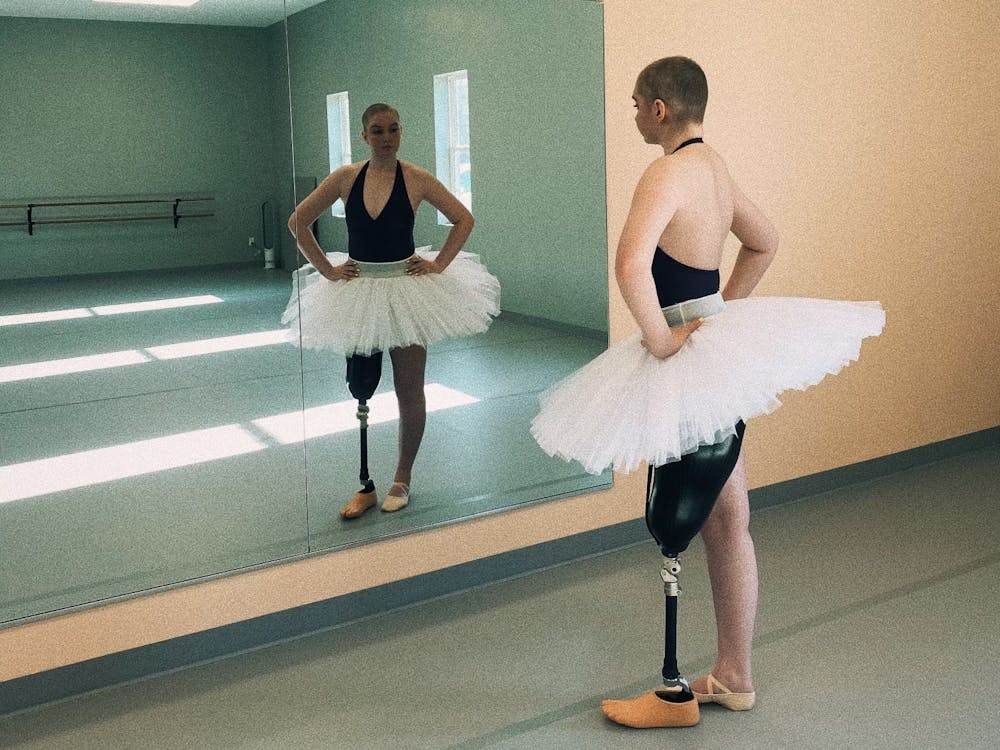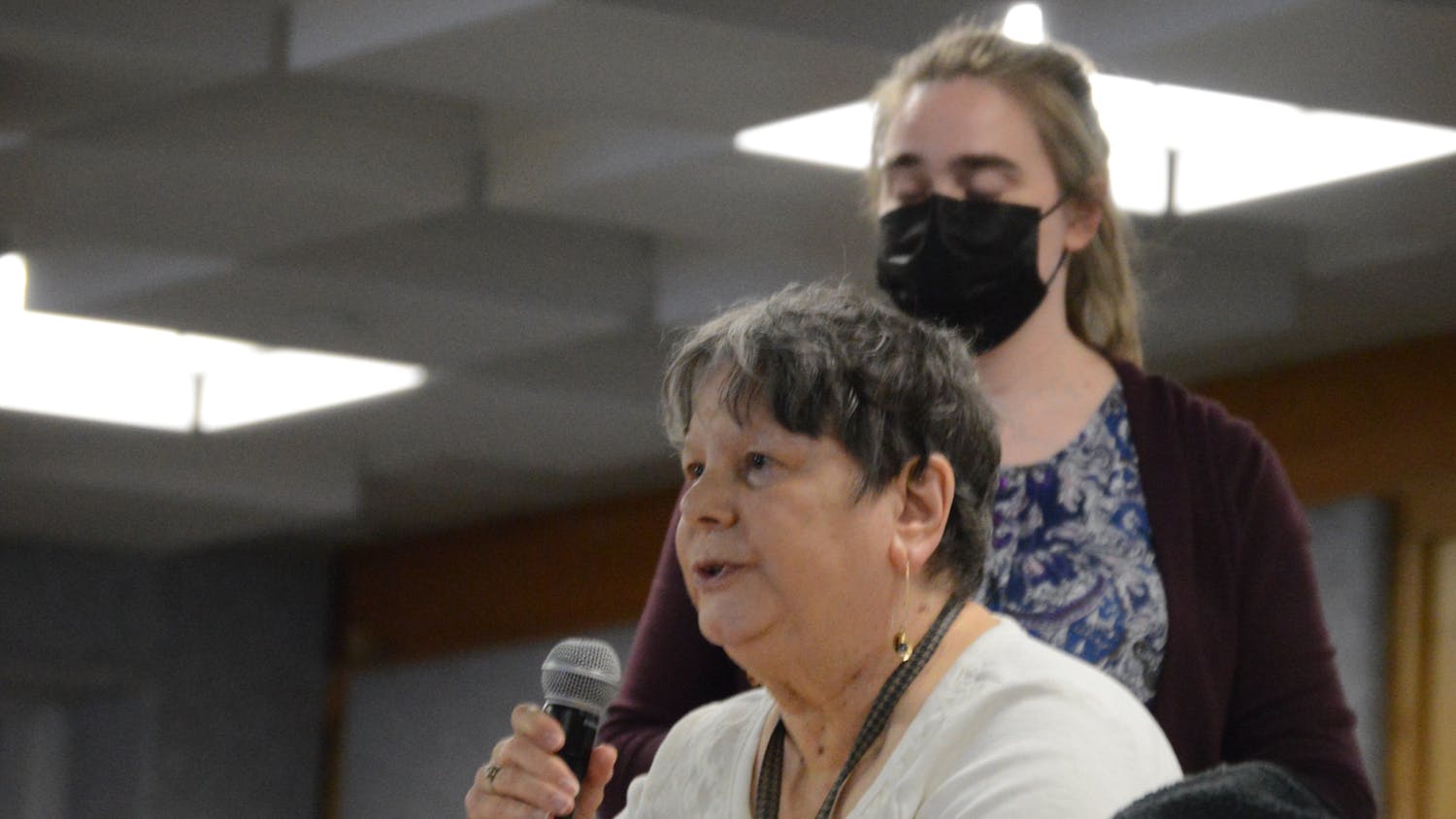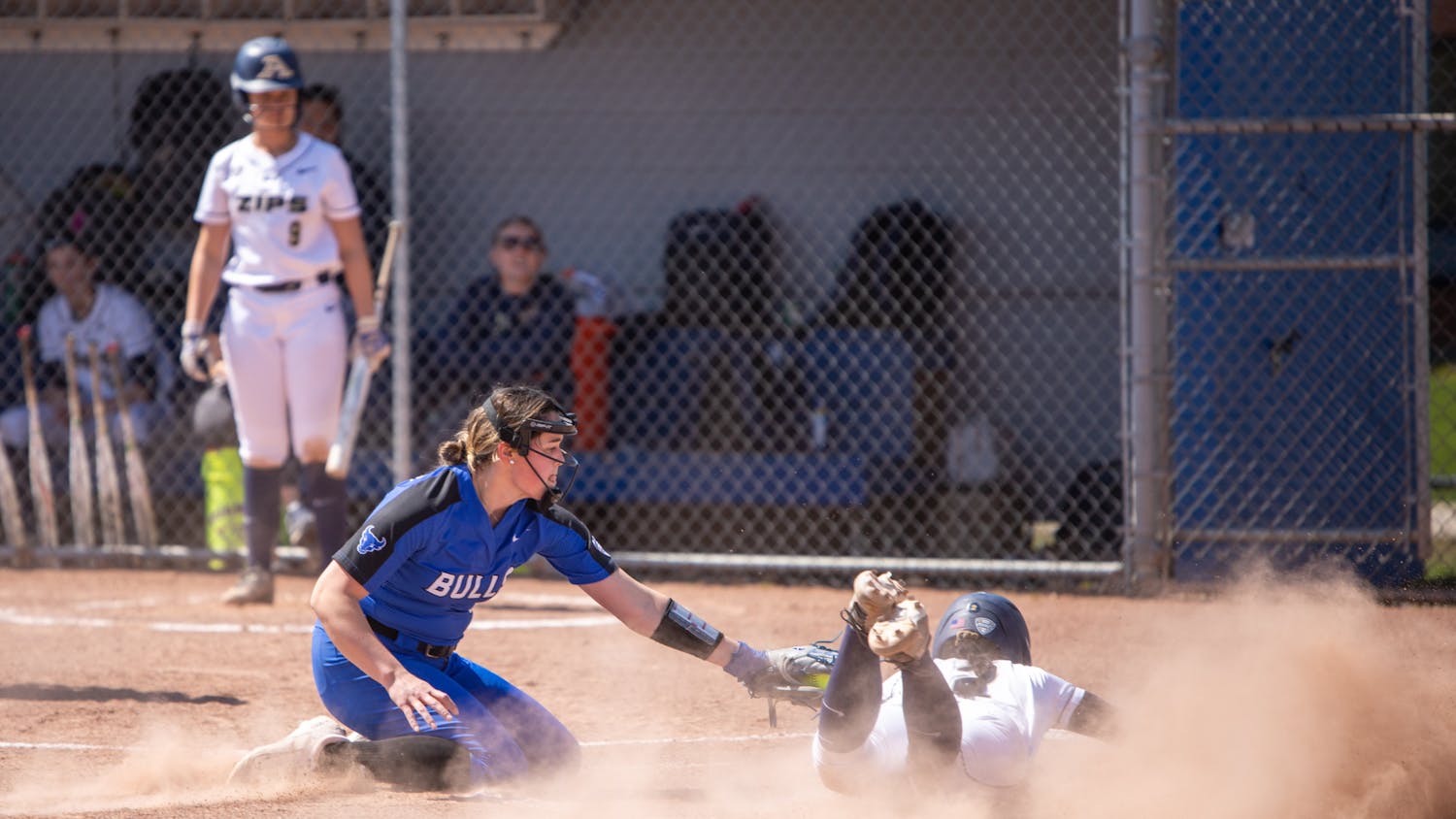Kara Skrubis has been determined to be a ballet star ever since she was 3 years old.
As a youth, she traveled nationally, performing pre-professional ballet. She started teaching ballet and enrolled at UB as a dance major.
But her life took an unpredictable turn during her first semester at UB.
In October 2019, Skrubis woke up with extreme pain in her left knee, which developed into a “warm lump.” A doctor at a local urgent care was unable to diagnose the issue. Three months later, her orthopedic doctor found a tumor in her left tibia.
At 18 years old, she was diagnosed with osteosarcoma, a rare bone cancer most commonly found in teenagers and young adults. The survival rate for most patients is 70%.
“It’s really hard to have hope when you’re given a prognosis and when you're given a deadline almost when you’ve been turned into a percentage,” she said. “You start to view yourself as a statistic rather than a life.”
Her diagnosis changed the trajectory of her life. She went from pursuing dreams of becoming a dance star to fighting for her life.
Her treatment regimen was grueling, forcing Skrubis to take a year off classes. She started chemotherapy in February 2020, had her left leg amputated to get rid of her cancer in April 2020, did immunotherapy until June 2021 and finished chemotherapy in September 2021.
Over a year in remission, the 21-year-old Skrubis, now a senior double majoring in psychology and health and human services, has not let her diagnosis and amputation define what is possible for her. In addition to being a student, she fosters dogs for Buddy’s Second Chance Rescue, takes photos for UB’s dance program and still practices and teaches ballet. Her story was even featured in People magazine in November.
Skrubis said it was “really nice” to use her new-found platform to raise awareness about osteosarcoma on a national scale.
“[Osteosarcoma] is deemed the oldest cancer known to humankind,” she said. “It was found in dinosaur bones, but we all forget about it and we don’t really care about it because it’s rare. There are still many kids that are diagnosed and unfortunately do not make it.”
Skrubis was treated in pediatrics, where she had access to a child life therapist who helped her overcome and cope with her situation. She was one of the oldest patients in the hospital and said seeing her younger peers take on cancer treatment inspired her.
“I think that ever since I was diagnosed, I was trying to figure out ways to help the kids in the cancer community,” she said. “It is pretty hard to see a kid get diagnosed with something as devastating as osteosarcoma. So I think ever since my diagnosis, I was kind of changing my gears into ways that I can give back and that’s now kind of the career path I’m on.”
Skrubis has put her ballet dreams aside and now aspires to be a certified child life therapist to help kids facing medical crises like hers.
“I think that working with kids always has made me the happiest, [and] the hospital setting is a great way to give back,” she said.
Chemotherapy wouldn’t be enough. Skrubis had three options. Her doctors could replace her infected bone with titanium. She could undergo a rotationplasty, where her femur, knee, and upper tibia would be surgically removed and her lower leg would be rotated 180 degrees and then attached to her femur.
Skrubis chose the third option: amputation of her left leg.
“Osteosarcoma does not have the best outcomes, and I really wanted to have clear [cancer] margins and not have to do any more type of treatment or surgery, so I just elected to have them amputate my leg,” Skrubis said.
The amputation left Skrubis weak. Her left leg lost muscle, withering away in her hospital bed. Its size still fluctuates today.
“Treatment was really tough on me, and sometimes the biggest achievement that I had during the day was brushing my teeth in bed or just waking up and eating something,” she said.
Skrubis could do everything that she was able to do prior to treatment; she just had to learn how to do it in “adaptive ways.”
It took her a long time to relearn how to walk and an even longer time to relearn to dance. She had to use a wheelchair, a walker and crutches before she could walk with her prosthetic leg.
“Walking was pretty scary, it was a lot of falling, a lot of pain and very frustrating,” she said. “I’m still learning how to walk to the best of my ability today. It’s been a year walking independently, and I’m still figuring out my best gate and speed and balance.”
She believes that answering their questions gives her an “awesome” opportunity to educate them about people with visible disabilities.
“I know that I look different than most people,” she said. “I know that the public tends to stare at someone who looks different than them, which is totally normal and I think [that is] a part of being human. My favorite thing is when kids come up and ask about my leg.”
There was an abundance of support throughout her surgery and recovery. Her friends from her dance classes put together a care package with “goodies,” blankets and a “feel better” video.
But no one was more supportive than Skrubis’ mom, who spent every night with her through 18 months of treatment. She says her mom became her “other half.”
“I was just sitting in the bed and getting the medicine pumped through me, and it kind of felt like whatever happened to me, happened to me,” she said. “Whereas, my mom was watching a part of her go through something that she couldn’t control.”
Jeanne Fornarola, a dance professor at UB, taught Skrubis her freshman year and now collaborates with Skrubis on her dance photography. Fornarola described Skrubis as “resilient, courageous, creative and unstoppable.”
“I remember Kara coming up with such really, really brilliant and creative responses,” Fornarola said of Skrubis’ dance style. “I remember thinking I saw a whole new side of her. I remember thinking how creative she was and also, at that moment, what a leader she was.”
Now working as a dance studio choreographer, Skrubis works with clients as young as 3 years old.
“I’d say it’s pretty rewarding,” Skrubis said. “I was a dance teacher before my diagnosis, so it was another way of learning how to get back into it. It taught me that teaching doesn’t have to really change at all because of my diagnosis, and it’s still a way to be in the dance world.”
Prior to her diagnosis, her experience with ballet was “very hardcore and strict,” which took a mental and physical toll on her. Her love of ballet has been rekindled after her treatment.
“I don’t put so much pressure on myself to be perfect because no one’s really perfect, even if you have two legs.”
A.J. Franklin is an assistant features editor and can be reached at aj.franklin@ubspectrum.com





